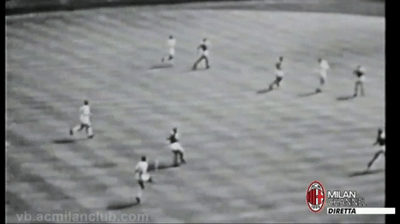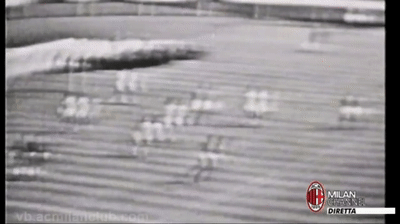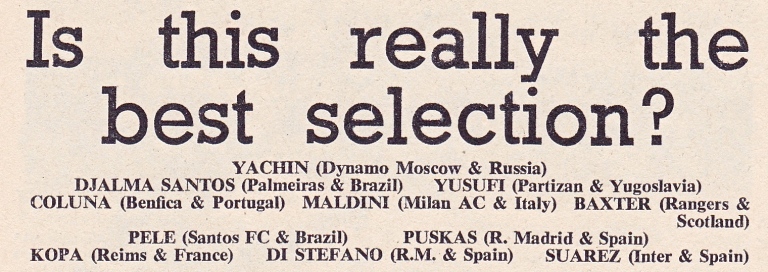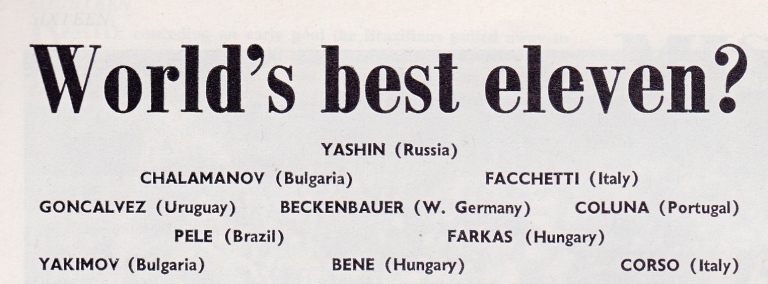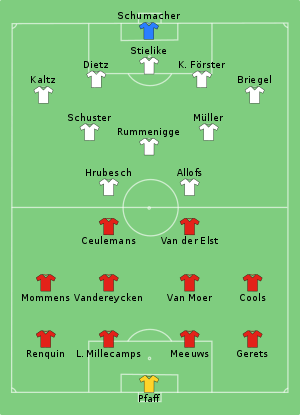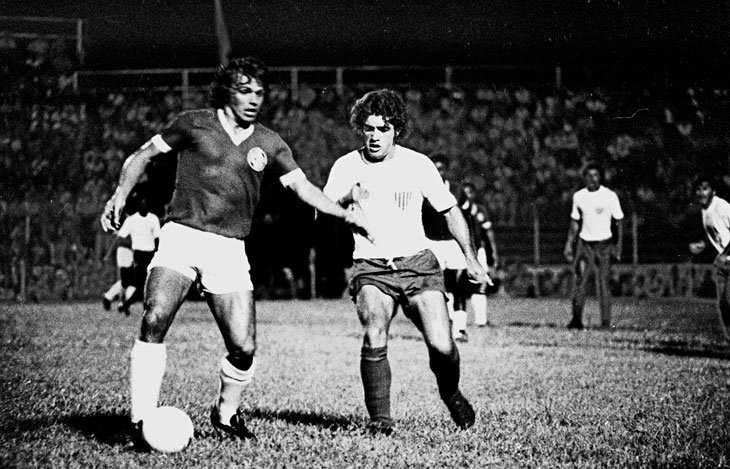Indnyc
Full Member
- Joined
- Aug 3, 2017
- Messages
- 4,543
Team Raees/Invictus

Vs.
Team Pat_Mustard
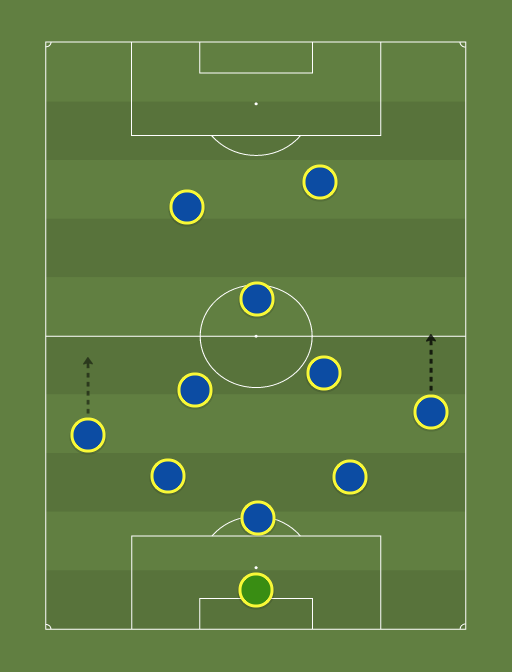
Tactics Team Raees/Invictus
In the heart of defense, we've gone with a minor functional change. The quality remains the same, so it's a lateral move - but we now have someone who's a seamless fit with just about anyone, and one of the few GOAT caliber defenders to boast sweeper level technique and defensive nous in addition to the physique and athleticism of some of the best stoppers over the years. Could wax lyrical all day long, but to cut a long story short, Don Elías Figueroa is quite simply one of the greatest ever and undoubtedly the greatest and most complete from the South American continent.
To the left of Chumpitaz is one of the most most tactically malleable players of all time, Leovegildo Júnior. A world class player as leftback, box-to-box playmaker, or defensive midfielder, here Júnior will operate as a playmaking leftback who can dovetail wonderfully with Masopust while boasting good levels of defensive awareness given the relatively complete nature of his game and the intelligence with which he operated on the pitch:
Completing the defense is a bona fide X-Factor in the offensive phase, Manfred Kaltz - whose crossing threat is perhaps second best to only Beckham down the right - and suits our offensive cast to a tee given their individual and collective prowess in the air as Manny's renowned GOAT-ish level Bananenflanken will add an extra wrinkle to our team composition:
And in a free second striker role akin to his peak is The King of Football, Edson Arantes do Nascimento aka Pelé - scorer of 1,281 goals in 1,363 games during his career who has the license to pretty much do what his heart desires as a dazzler in attack, because that would be the best role for him, in our opinion.
Tactics Pat_Mustard
Formation: Counterattacking 5-3-2
We change shape to a 5-3-2 for this match, with our new signings Ruud Krol and Guido Buchwald slotting into the defence at LWB and RCB respectively. The formation looks a good tactical fit against this particular opposition. Assuming they stick with their 4-3-1-2 from their last match, we'll have two supremely capable markers in Buchwald and Forster picking up their two strikers, with Zmuda as the spare man and defensive organiser. Voronin and Bonhof are the disciplined, robust ball-winners in what looks to be quite a crowded midfield area, and both have ample quality in transition too.
Krol and Dani Alves are an outstanding pair of wide men, and Alves looks poised to have a good game, with the opposition's narrow-ish left side leaving him relatively comfortable defensively, and the protection of the 5-3-2 formation giving him ample scope to charge forward when we're in possession. As ever, Ro/Ro are the crown jewels of this team. We expect Ronaldo to forage out wide in search of openings, and look to exploit the space behind the opposition full backs. As good as Figueroa/Chumpitaz are, Ronaldo charging at them at full throttle with Romario in support is a nightmarish prospect for any defence.

Vs.
Team Pat_Mustard

Tactics Team Raees/Invictus
- Formation: Vertically oriented 4-3-1-2 with a strong focus on midfield given Rivera's ability to control games, Masopust's excellence as a left half/auxiliary playmaker, Coluna's tenacious and technically complete play on the right, and Zito's intelligence and organisational nous as the holding midfielder.
- Ideology: Fairly direct and robust given the incisive nature of the attackers, but also a strong emphasis to control possession and regulate the game - especially with the addition of the Masterful Coluna - who boats a heady mix of stamina and strength, on top of accurate and powerful long-distance shot and technical skills. Aside from proven pedigree for Portugal, and one of the most storied teams of the European Cup - Benfica - with whom he won 2 crowns and reached 4 finals.
- World Soccer World XI: 1963, 1964, 1965, 1966
- FIFA World Cup: All-Star Team 1966
In the heart of defense, we've gone with a minor functional change. The quality remains the same, so it's a lateral move - but we now have someone who's a seamless fit with just about anyone, and one of the few GOAT caliber defenders to boast sweeper level technique and defensive nous in addition to the physique and athleticism of some of the best stoppers over the years. Could wax lyrical all day long, but to cut a long story short, Don Elías Figueroa is quite simply one of the greatest ever and undoubtedly the greatest and most complete from the South American continent.
To the left of him is another legendary centerback - El Capitán de America, Héctor Chumpitaz - widely regarded as one of the best central defenders in history and as one of the true Sudamerican greats - alongside the likes of Santamaría and Nasazzi.Perhaps the best tribute of that era came from Beckenbauer, who famously said: “I'm the European Figueroa.”
A quick, resolute and powerful figure belying his small-ish frame, Chumpitaz is a seamless fit with the Don, and the collective defensive and leadership ability of the duo, on top of rare athleticism and man-marking ability will help safeguard the central zones against Ro-Ro.
- 1969 Best Defender CONMEBOL
- 1971 Best Defender CONMEBOL
- 1973 All Stars CONMEBOL: Captain
- 2000 World Soccer's: The 100 Greatest Footballers of All Time
- 2004 South American - Player of the Century: Ranking Nº 35
- 2007 Midfield Dynamo's 10 Heroes of the Copa América
- 2007 Copa América All-Star team, all-time
- 2008 All Stars CONMEBOL in the last 50 years
To the left of Chumpitaz is one of the most most tactically malleable players of all time, Leovegildo Júnior. A world class player as leftback, box-to-box playmaker, or defensive midfielder, here Júnior will operate as a playmaking leftback who can dovetail wonderfully with Masopust while boasting good levels of defensive awareness given the relatively complete nature of his game and the intelligence with which he operated on the pitch:
Completing the defense is a bona fide X-Factor in the offensive phase, Manfred Kaltz - whose crossing threat is perhaps second best to only Beckham down the right - and suits our offensive cast to a tee given their individual and collective prowess in the air as Manny's renowned GOAT-ish level Bananenflanken will add an extra wrinkle to our team composition:
Patrolling the defensive midfield third is Two Time World Champion, Zito - a precursor to the likes of Makelélé in the post-modern era, Zito was a renowned midfield organizer - with a knack for being in the right place at the right time to mitigate danger as the defensive pivot for Brazil's attacking behemoth as well as Santos' nigh all-conquering '60s team (which is considered by many to be one of the greatest club teams of all time). Pretty much the ideal building block as holding/defensive midfielder for our setup. To the left of him is arguably the finest left-half in football history and the first Eastern European Ballon D'Or winner, Josef Masopust - a dominant force in his half of the field, he will play a big part in our build-up play with his strength in possession, drag markers slightly wider towards his favorite inside and outside left channels (thus providing auxiliary width), and link up with the forwards with his ability to go on surging runs. On the right is the foundation of Benfica's legendary Golden Team of the '50s and '60s - Mário Coluna. Dubbed the The Sacred Monster, he reprises his midfield general role with an enviable blend of directness, physicality, tenacity and technical ability - which makes him a formidable presence in the engine room as a true box-to-box player. On the ball, he'd primarily look to service the forwards with his passing skills and also occasionally mix it up with a dribble to the right of Rivera, a rampaging run forward or a cracker from outside the box. Defensively, he'll put his physicality and dynamism to good use. All in all, a wonderful and direct complement to the styles of Rivera, Zito and Masopust.Kaltz was famous for his right-footed crosses, which he hit with so much spin that they curved like a banana. They were affectionately called "Bananenflanken" ("banana crosses"). He often used this technique to set up hulking striker Horst Hrubesch, whose 96 goals with HSV included many from Kaltz crosses that Hrubesch headed into the opposing goal. Hrubesch once described their partnership when he explained one of his goals with the often quoted words "Manni banana, I head, goal".
Spearheading the attack is one of the most clinical and brutal classic strikers of all time, record 5 time Serie A Top Scorer as Capocannoniere, the most efficient goalscorer in Serie A ever with 0.77 goals/match, and the highest scorer for Milan to date - Gunnar Nordahl. A behemoth in the opposition box, naturally athletic and quick despite his imposing frame - boasting devastating power and aerial dominance, Nordahl will stretch the field and look to unsettle the defense. In the attacking midfield role is Gianni Rivera, The Golden Boy - a sumptuous playmaker with tons of flair and skill, precise passing, great vision and a good shot. Surrounded by hard working and technical players, Rivera will be in his elements as a pristine creator of goalscoring opportunities for others around him:Mario Coluna was one of the world's most influential and comprehensively gifted midfielders throughout the 1960s, majestically bestriding the European football scene as captain of Benfica and Portugal, operating for both club and country as the ideal foil for the revered Eusebio, his fellow Mozambican, who died in January. Though he was not a tall man, the muscular Coluna exuded an aura of effortless command, combining formidable physical authority with an elegant style and delightfully subtle skills which seemed somehow unexpected in one so powerful.
Coluna's greatest strength was that he possessed a rare blend of physique, technique and tactical nous. In addition to its flexibility and its capabilities, it was also the psychological factor that made him a fundamental part of his team. At a time of hard fouls, personal watchdogs, casual referee (especially abroad) and with no video evidence it was Coluna who usually protectively stood before his teammates.
He should have said, inter alia, to opponents by fouls, "when you touch the boy again, then you will leave the place with a foot the other kissing". He also motivated his teammates, divided them and commanded them around - without ever receiving authority problems. Just as he created goals forward, he prevented behind goals - subtle yet powerful. Defensive he was very good, used his physical strength not only in combat, but large areas to control, situational to double and intercept many passes dynamically. Here he showed what could create good positional play together with good physique.
His physique and defensive work deceived occasionally over it, that it was Coluna who was also responsible for the style of play and creativity in his team. In symbiosis with his team relevant vein and his protectiveness Coluna was one of the first football player who was too good for any task and its individual input looked into play as part of a collective output. He might even resemble the other great star of the 50s, Alfredo Di Stefano, more than Brazil's Didi - although Coluna was never so pressing and present. He was too much Senhor Coluna.
Though he wasn't a rough player, it would be a mistake to say he wasn't gritty and played with supreme intelligence and creative flamboyance. His vision for passing was immaculate; he created room for himself and provided high-percentage assists. His midfield dominance was not one warranted by an intimidating presence, but more so by his tactical and technical brilliance, of which there are few parallels.
Italy - Player of the Century
European election.
1.Gianni Rivera 113
2.Giuseppe Meazza 90
3.Giacinto Facchetti 79
4.Franco Baresi 66
5.Sandro Mazzola 53
6.Silvio Piola 46
7.Paolo Rossi 27
8.Luigi Riva 26
9.Roberto Baggio 21
10.Gaetano Scirea 19
And in a free second striker role akin to his peak is The King of Football, Edson Arantes do Nascimento aka Pelé - scorer of 1,281 goals in 1,363 games during his career who has the license to pretty much do what his heart desires as a dazzler in attack, because that would be the best role for him, in our opinion.
“The greatest player in history was Di Stéfano. I refuse to classify Pelé as a player. He was above that.” — Ferenc Puskás
“We went up together to head a ball. I was taller, had a better impulse. When I came back down, I looked up in astonishment. Pelé was still there, in the air, heading that ball. It was like he could stay suspended for as long as he wanted to.” — Giacinto Facchetti
“There's Pelé the man, and then Pelé the player. And to play like Pelé is to play like God.” — Michel Platini
“Pelé was the only footballer who surpassed the boundaries of logic.” — Johan Cruyff
Tactics Pat_Mustard
Formation: Counterattacking 5-3-2
We change shape to a 5-3-2 for this match, with our new signings Ruud Krol and Guido Buchwald slotting into the defence at LWB and RCB respectively. The formation looks a good tactical fit against this particular opposition. Assuming they stick with their 4-3-1-2 from their last match, we'll have two supremely capable markers in Buchwald and Forster picking up their two strikers, with Zmuda as the spare man and defensive organiser. Voronin and Bonhof are the disciplined, robust ball-winners in what looks to be quite a crowded midfield area, and both have ample quality in transition too.
Krol and Dani Alves are an outstanding pair of wide men, and Alves looks poised to have a good game, with the opposition's narrow-ish left side leaving him relatively comfortable defensively, and the protection of the 5-3-2 formation giving him ample scope to charge forward when we're in possession. As ever, Ro/Ro are the crown jewels of this team. We expect Ronaldo to forage out wide in search of openings, and look to exploit the space behind the opposition full backs. As good as Figueroa/Chumpitaz are, Ronaldo charging at them at full throttle with Romario in support is a nightmarish prospect for any defence.


